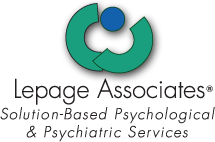Sexual Offender Risk Assessment
What do you do when you have a client who has been accused of a sexual offense?
Accurate risk assessment is crucial to proper diagnosis and treatment of sex offenders.
Special care is required for these cases because of the serious consequences sexual offenses can have on the victims. Most sexual offenders have a strong potential to recidivate, or commit another offense. Sex offenders are just as likely to recidivate with a non-sexual offense as with a sexual offense, but the predictors of these two should be evaluated separately.
Research has also indicated that offenders who received and completed treatment were less likely to recidivate than those who did not, which has major implications for the importance of treatment.
Future incidents of sexual behavior cannot be predicted with complete certainty, but growing research suggests that sexual offense recidivism can be predicted with at least moderate accuracy. The concepts that should be included in a good risk assessment are enduring potentials to reoffend and factors that indicate the onset of new offenses.
Static risk factors, such as previous offenses and childhood abuse can predict patterns that lead to sexual offending. But many factors that change with time can also cause a person’s potential to engage in deviant sexual behavior to fluctuate, so these must also be considered.
A psychologist evaluates the level of violence used in the past, age and gender of victims, use of drugs or alcohol, sexual fantasies, urges, and behavior, history of sexual abuse, age-appropriate sexual relationships, and age of onset of deviant interests. The strongest predictors of sexual offense recidivism are found to be factors related to sexual deviance. These include deviant sexual interests, onset of sexual offenses at an early age, and targeting victims who are boys, strangers, or unrelated to them. Next are general criminological factors, such as prior offenses, age and antisocial personality disorder. These are good predictors of any kinds of crimes and not specific to sexual offenses.
Dynamic factors, or factors that can change frequently, are also important in assessing risk of sexual offense recidivism. Among these are intimacy deficits, attitudes that are tolerant of sexual assault, negative peer influences, emotional and sexual self-regulation, and general self-regulation. Sex offenders can range from low to moderate to high levels on any of these variables; high levels are associated with higher risk of recidivism.
Usually risk of recidivism is determined by a combination of relevant risk factors and not just one, so there are three methods psychologists use to evaluate a range of risk factors. They may use a clinical evaluation based on empirical evidence, pure actuarial predictions, or clinically adjusted actuarial predictions. The clinical evaluation starts with the overall recidivism base rate and adjusts the risk level by considering other factors associated with risk of recidivism.
Actuarial risk assessments attach specific statistical weighting to different variables which assess the risk. They are based on the idea that if accuracy of prediction is the most important factor, it is best to find out how members of a comparable group of individuals conducted themselves over time. There is a specific procedure to translate each variable into a risk level, which requires minimal judgment by the evaluator. Actuarial assessments are predicted to be more accurate than clinical evaluations, but as of now both are considered reliable methods of risk assessment.
Actuarial Assessment of Recidivism in Sex Offenders
Rapid Risk Assessment of Sexual Recidivism (RRASOR): The RRASOR is a brief instrument used to screen for risk of sexual recidivism among males who have been convicted of at least one sexual offense. It relies on information obtained in files and has been tested on many populations.
Sex Offender Risk Appraisal Guide (SORAG): The SORAG is a modification of the VRAG (Violence Risk Appraisal Guide) used to assess the risk of violent and sexual recidivism of previously convicted sex offenders within a specific period of release.
Minnesota Sex Offender Screening Tool Revised (MnSOST-R): This measure incorporates historical and institutional information, such as participation in treatment. Scores are divided into four categories, with estimated recidivism rates ranging from 16-88% over 6 years.
Sexual Violence Risk-20 (SVR-20): The SVR-20 is used to characterize an individual’s risk of committing sexual violence and for planning to manage that risk. It has three major sections: Psychosocial Adjustment, Sexual Offenses and Future Plans.
Multiphasic Sex Inventory-II (MSI-II): The MSI-II measures the sexual characteristics of people who have admitted to or been charged with committing sexual offenses. It can be used both as an evaluation of sexual deviance and to measure treatment progress.
It should be noted that an evaluator cannot determine if someone committed an offense in the past, only their likelihood of committing an offense in the future. Therefore, if you have a client who has been accused of a sexual offense, a risk assessment can look at the likelihood that the individual would commit such an offense. If your client has admitted to committing an offense, or there is strong evidence to suggest the crime has occurred, an evaluation can determine the likelihood of re-offense.
Click here to download this article as a PDF
Click here to return to Forensic Psychology Articles
